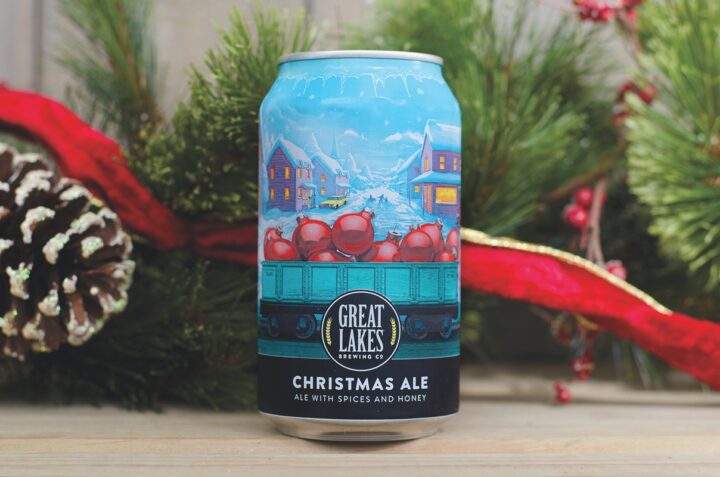
At Cleveland’s Great Lakes Brewing Co., the top-selling beer each year is often a label that’s only available for eight weeks. The brewery’s Christmas ale, released every October, has become such a cult favorite among beer aficionados and non-enthusiasts alike that demand often outstrips supply, according to vice president of sales Chris Brown. “In some years, bottles have dried up shortly after Thanksgiving,” he says of the seasonal brew, which was first produced in 1992.
Beer retailers also note the continued popularity of year-end brews. “Every year we take on more and more winter beers, and every year they do very well,” says Ferdinand Sneed, beer buyer at Jungle Jim’s International Market in Fairfield, Ohio. “It’s rare that they make it to our ‘Closeout Wall,’” which is the store’s display for slow-moving products, he says. Among Jungle Jim’s top-selling winter brews are Great Lakes’ Christmas ale ($15 a 6-pack of 12-ounce cans or bottles) and Tröegs Independent Brewing’s Mad Elf Belgian-style ale ($15 a 6-pack of 12-ounce bottles). This year, Sneed is even ramping up his stock of the brews. “Last year some of them sold out before December,” he says. “I’d like to avoid that this year.”
Holiday-themed beers are the most popular among winter brews. Great Lakes’ offering is distributed in 14 states and Washington, D.C. and was packaged in cans for the first time in 2020. “Consumer response was fantastic,” Brown says, adding that the festive artwork featured on the package is also appearing on this year’s bottle label. Tröegs’ Mad Elf, meanwhile, brewed with cherries and honey, has been produced for nearly 20 years and is available in ten eastern states and Washington, D.C. For its inaugural batch, the Hershey, Pennsylvania-based brewery sourced 300 pounds of honey, but due to its popularity these days, 25,000 pounds is now needed, senior brand manager Justin Williams says. “Mad Elf is definitely a beer that helped put Tröegs on the craft beer map,” he adds.

Rogue Ales & Spirits’ Santa’s Private Reserve is also a long-established holiday brew, having been first produced in 1996 as a red ale. In 2017, the brewery decided to begin changing the beer’s recipe each year. Last year’s Santa’s Private Reserve was a peppermint bark milk stout, and this year’s offering is Kringle Krusher, which vice president of marketing Hagen Moore states is a winter ale inspired by rum balls. “Our fans wait every year for the release of this seasonal, limited-edition beer,” Moore says. This year, for the first time, Santa’s Private Reserve is packaged in 4-packs of 16-ounce cans.
But Santa’s Private Reserve isn’t the only winter seasonal from the Oregon brewery. Knuckle Buster Cold IPA, produced with a cold fermentation technique, will be unveiled in January in 6-pack cans, and is expected to be available through April. Knuckle Buster replaces Yellow Snow pilsner. “We switch out our seasonal offerings every few years to keep our portfolio fresh,” Moore explains. Blizzard of Hops, meanwhile, is another winter beer from Tröegs that is part of the brewery’s rotating Hop Cycle line. “It’s definitely carved out its own niche in the winter season and has become a fan favorite among our Hop Cycle beers,” says marketing communications coordinator Jeff Herb.
One of the most appealing attributes of winter—and particularly holiday—beers, brewers, and retailers say, is the wide scope of consumers they attract. Brown says that Christmas ale consumers range from loyal Great Lakes fans to light lager drinkers. “Christmas ale seems to appeal to almost anyone. Its reputation and association with the season have invited so many into our portfolio over the years,” he remarks. Tröegs’ Herb says the same is true of Mad Elf. “Since the beginning, Mad Elf has appealed not just to beer lovers, but to people who usually don’t drink beer the rest of the year,” he says. “It’s become an essential part of the holidays for many people.”